In digital health engineering, few metrics are as vital as heart rate (HR) and heart rate variability (HRV). These offer profound insights into health, and at Edge Impulse, we have made substantial strides in simplifying the measurement of HR and HRV for resource-constrained devices. In this exploration tailored for engineers in the digital health industry we’ll dive deep into the technical aspects of Edge Impulse’s HR and HRV features. This article will help you gain a comprehensive understanding of PPG heart rate estimates, HRV feature generation, embedded code for on-device inference, and more.
Demystifying HR and HRV
Before we delve into the intricacies of Edge Impulse’s offerings, let’s establish a foundational understanding of HR and HRV.
Heart rate (HR) interbeat intervals
The measurement and analysis of heart rate interbeat intervals (IBIs) are fundamental in the study of cardiovascular physiology and health. IBIs, also known as RR intervals, represent the time intervals between successive heartbeats, specifically the time elapsed between the R-peaks of consecutive QRS complexes on an electrocardiogram (ECG) waveform.
Heart rate variability (HRV) is a measure of the variation in time between successive heartbeats. It goes beyond the measurement of the heart rate itself.
These variations offer insights into the balance between the sympathetic and parasympathetic branches of the autonomic nervous system of the autonomic nervous system, providing insights into various aspects of our health, including autonomic nervous system balance, cardiovascular health, stress levels, and fitness and recovery.
“A healthy heart is not a metronome”[1] — it exhibits complex patterns best described by mathematical chaos.
Real-world applications using HR/HRV features
Atrial fibrillation classification
Atrial fibrillation, a common cardiac arrhythmia affecting millions, can be detected using our HRV features extracted from PPG signals [2]. This approach offers diagnostic accuracy comparable to ECG-based methods, enhancing diagnostic accessibility for a broader population.
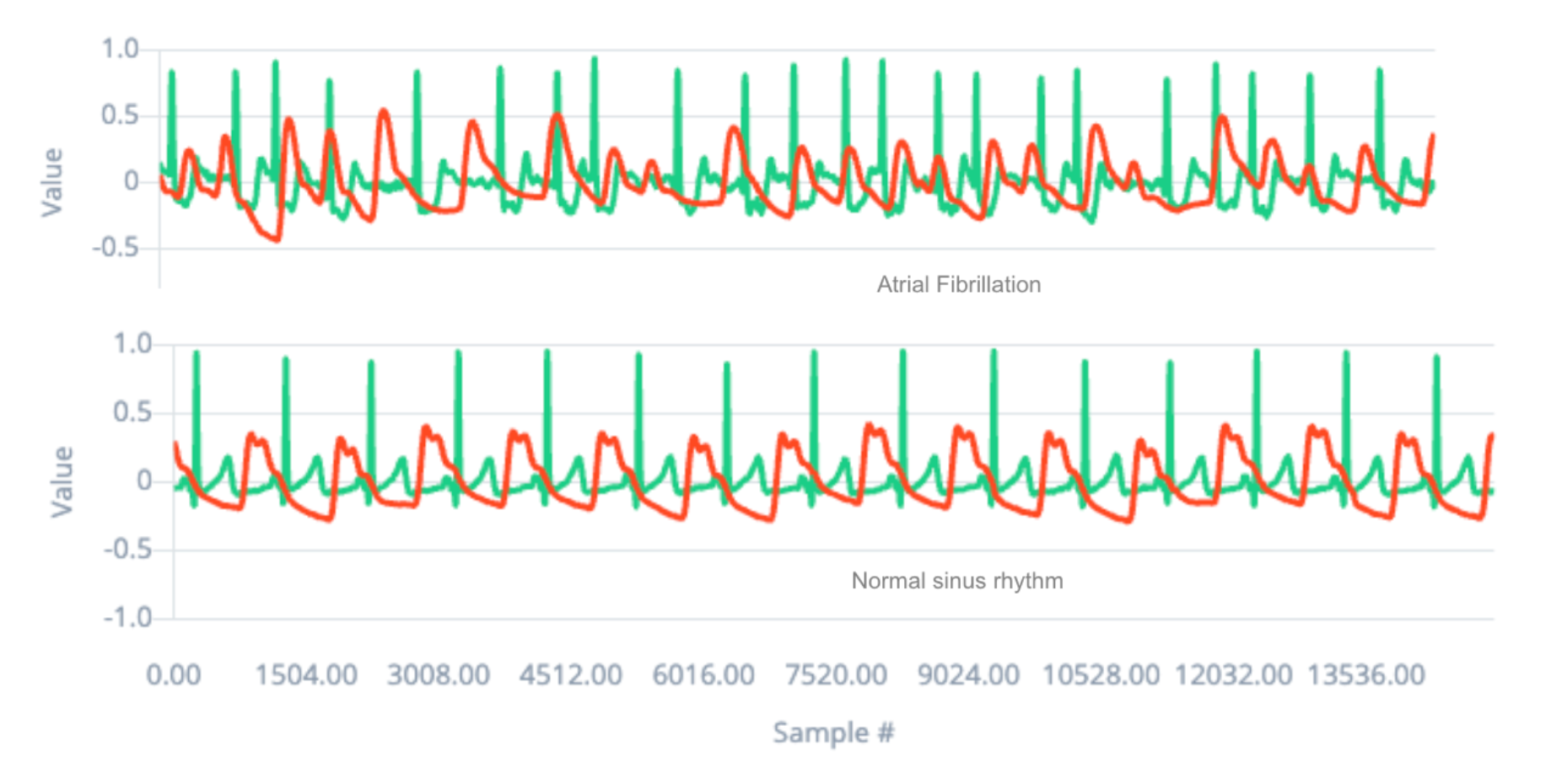
Stress detection
Psychological stress, affecting sympathovagal balance, is closely reflected in HRV metrics. This demonstrates that HRV can serve as an informative marker of the physiological effects of psychological stressors in healthy adult populations.
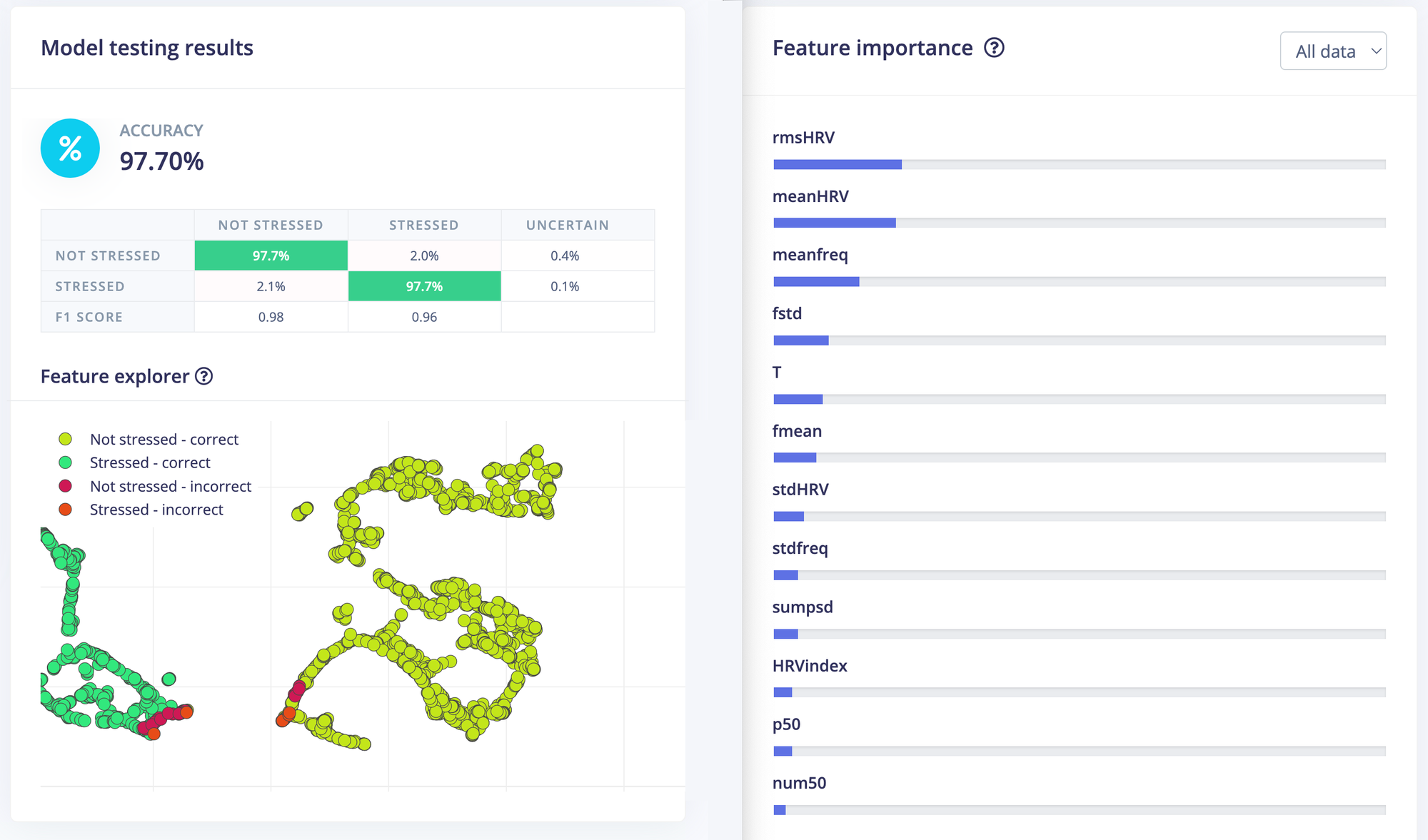
Sleep staging
Recent studies[3] have explored the use of HRV as a parameter for sleep staging. It offers a convenient, non-invasive, and cost-effective approach to monitoring sleep stages. While these results are obtained from HRV features alone, combining them with actigraphy and respiratory features can further enhance accuracy.
Empowering progress in digital health
Reduce R&D costs
Edge Impulse HR/HRV solutions leverage cutting-edge algorithms, eliminating the need for prolonged algorithm refinement. This streamlined approach significantly reduces research and development (R&D) investment, enabling accelerated product development.
Reliability
We deliver precise and dependable Interbeat Interval (IBI) measurements for HRV analysis, catering to a wide range of customer applications. This ensures that your digital health device consistently provides reliable results.
Large-scale clinical studies
Edge Impulse offers a robust infrastructure for expanding centralized and decentralized clinical studies to encompass small and large cohorts of subjects. This scalability is vital for rigorous testing and validation, ensuring that your dataset is diverse and minimizes model biases.
Solution expertise
Our solution engineers possess extensive expertise in applying HRV data to edge AI projects in the digital health domain. You can tap into this wealth of knowledge to save time and gain insights from industry experts.
Hardware-optimized ML models
Our models are meticulously crafted to operate efficiently on resource-constrained edge devices. This guarantees that your digital health product remains cost-effective.
To discover how Edge Impulse HR/HRV can enhance your digital health project, please visit our website or reach out to our team. We are here to support your innovation and provide impactful health solutions that truly matter.
Edge Impulse’s technical arsenal for HR and HRV
The suite of modules we provide for HR and HRV analysis encompasses feature generation libraries, on-device capabilities, a reference design, and strong expertise from our teams to leverage.
Edge Impulse HR/HRV features
For enterprise users, Edge Impulse offers libraries for HR and HRV feature generation, accessible both within the Edge Impulse Studio and on-device. Additionally, we provide blocks that facilitate training with raw PPG/ECG data within the Studio.
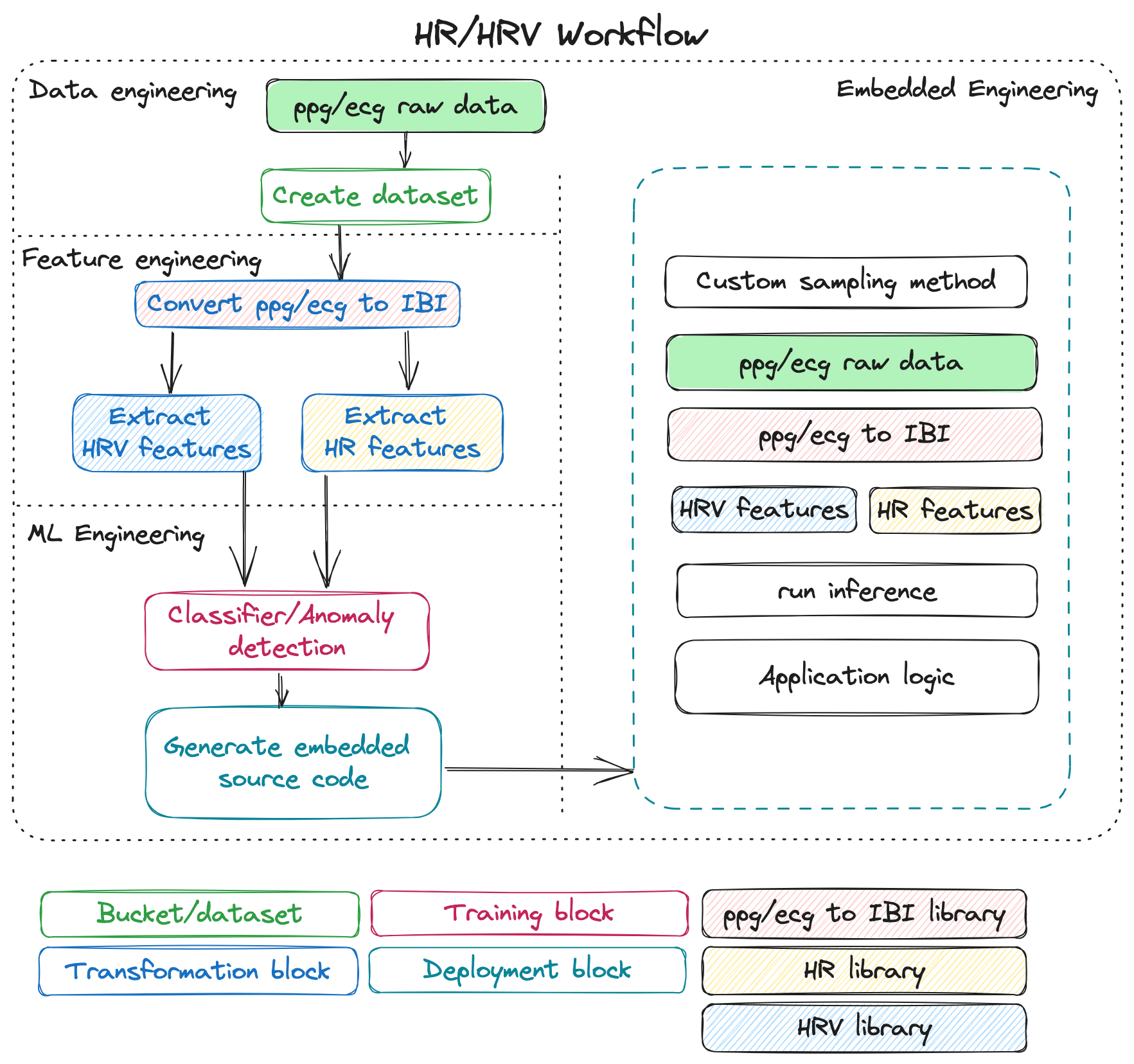
PPG/ECG to IBI Library
The first library we provide is called PPG-HR. It can efficiently and accurately detect heartbeats from either PPG or ECG signals, and then calculate the HR interbeat intervals (IBIs).
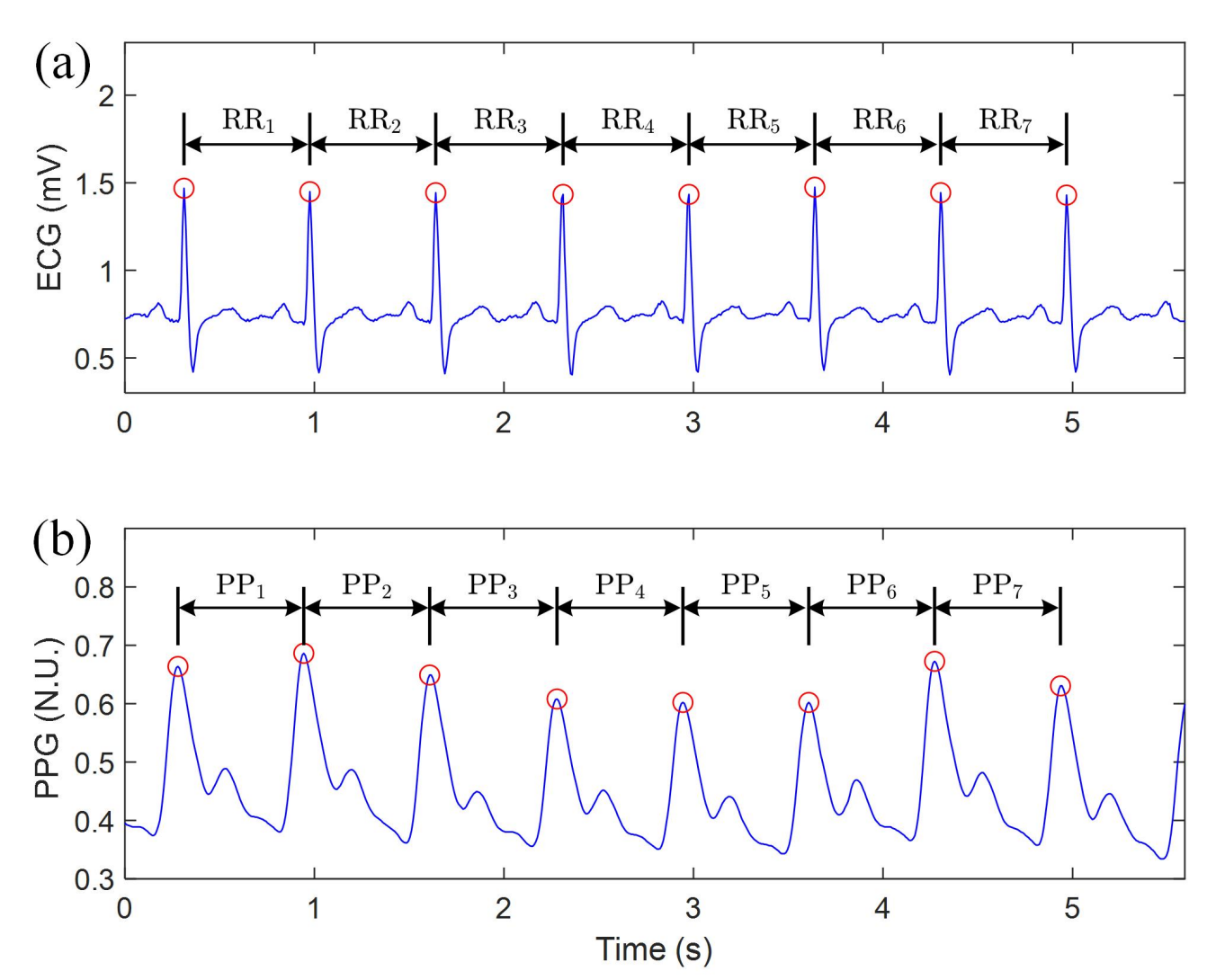
HRV feature extraction library
The output of the PPG-HR block is typically used as an input to the HRV extraction block. For situations where IBI data is already available, the HRV library can be run standalone, directly with IBI input.
In the time domain, you can extract metrics like AVNN, SDNN, rMMSD, pNN50, Mean HR, HR percentiles, IQR, HR slope, and rMMSD slope.
In the frequency domain, you can extract VLF/LF/HF values, energies, ratios and peaks, and boundary adaptation metrics.
The library also supports more advanced metrics like Sample Entropy, DFA, SD1, SD2, SD2/SD1 ratio, and circadian features.
See the appendix section to understand these features.
Extensive resources
In addition, we also provide multiple Studio project examples and a full reference design to help our customers facilitate the understanding and the replication of advanced workflows.
Edge Impulse’s algorithms can handle either PPG or ECG inputs, optionally integrating accelerometer data for enhanced accuracy. We demonstrated how to apply crucial filtering mechanisms to clean the signal and excel in precise IBI and HR estimation. Finally, to improve the detection of HR peaks, we can add feedback and tracking mechanisms. Remarkably, all of this is achieved with minimal RAM usage, consuming just 1.6K of memory.
Our commitment to simplifying heart rate variability (HRV) measurement aligns with our dedication to granting access to expert knowledge and advanced algorithms. By utilizing Edge Impulse HR/HRV solutions, you can streamline your development process, benefiting from the expertise of industry leaders in the digital health sector.
Appendix
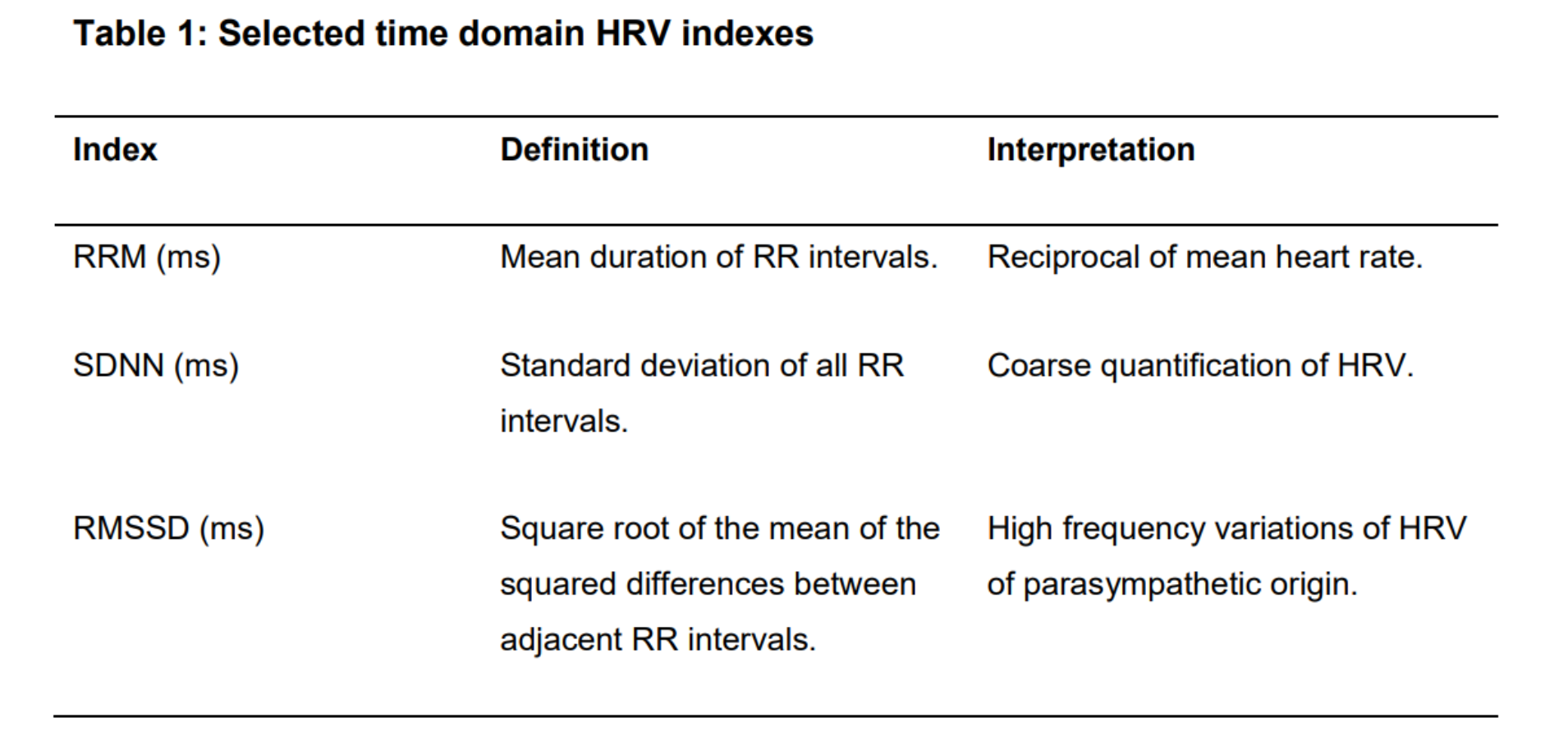
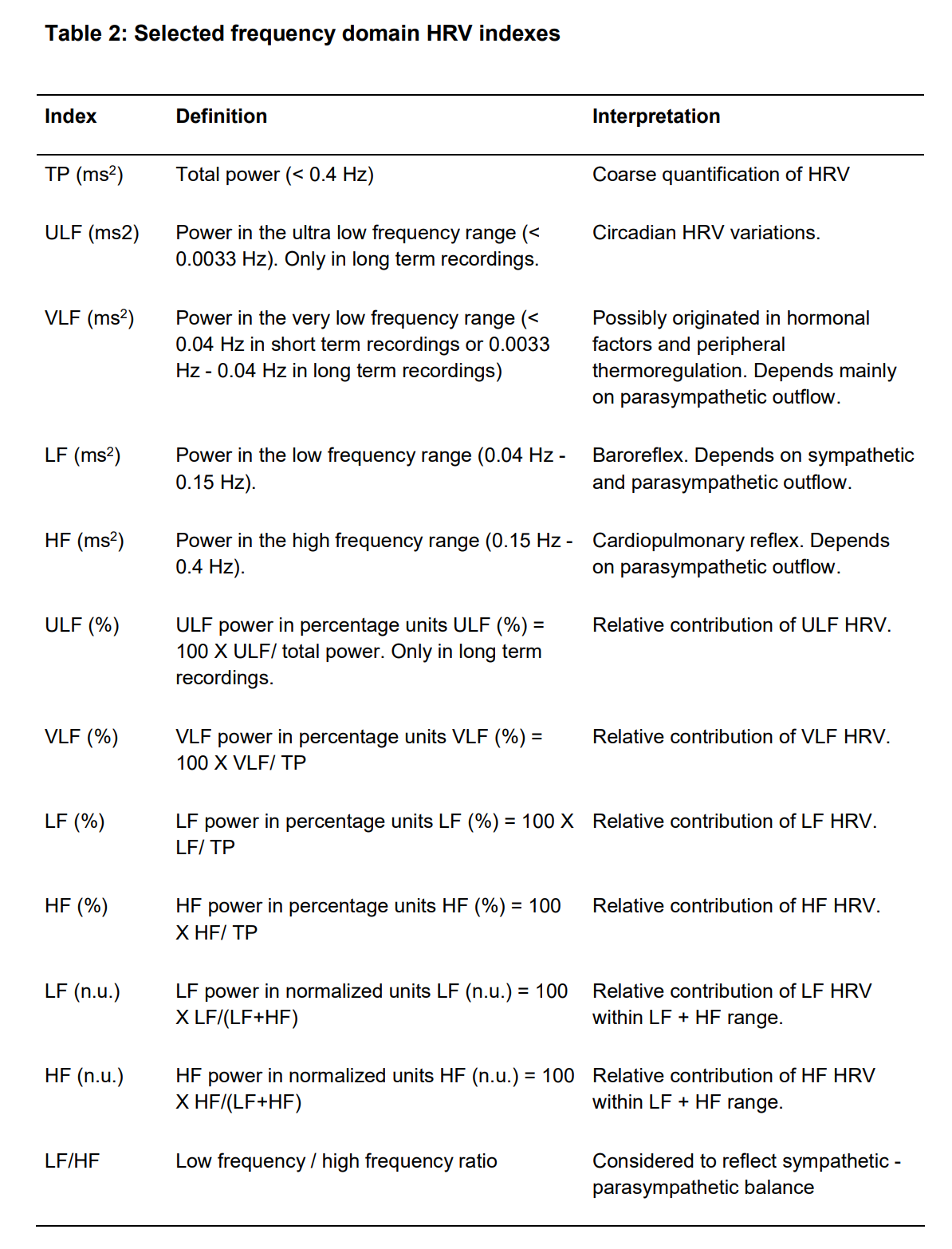
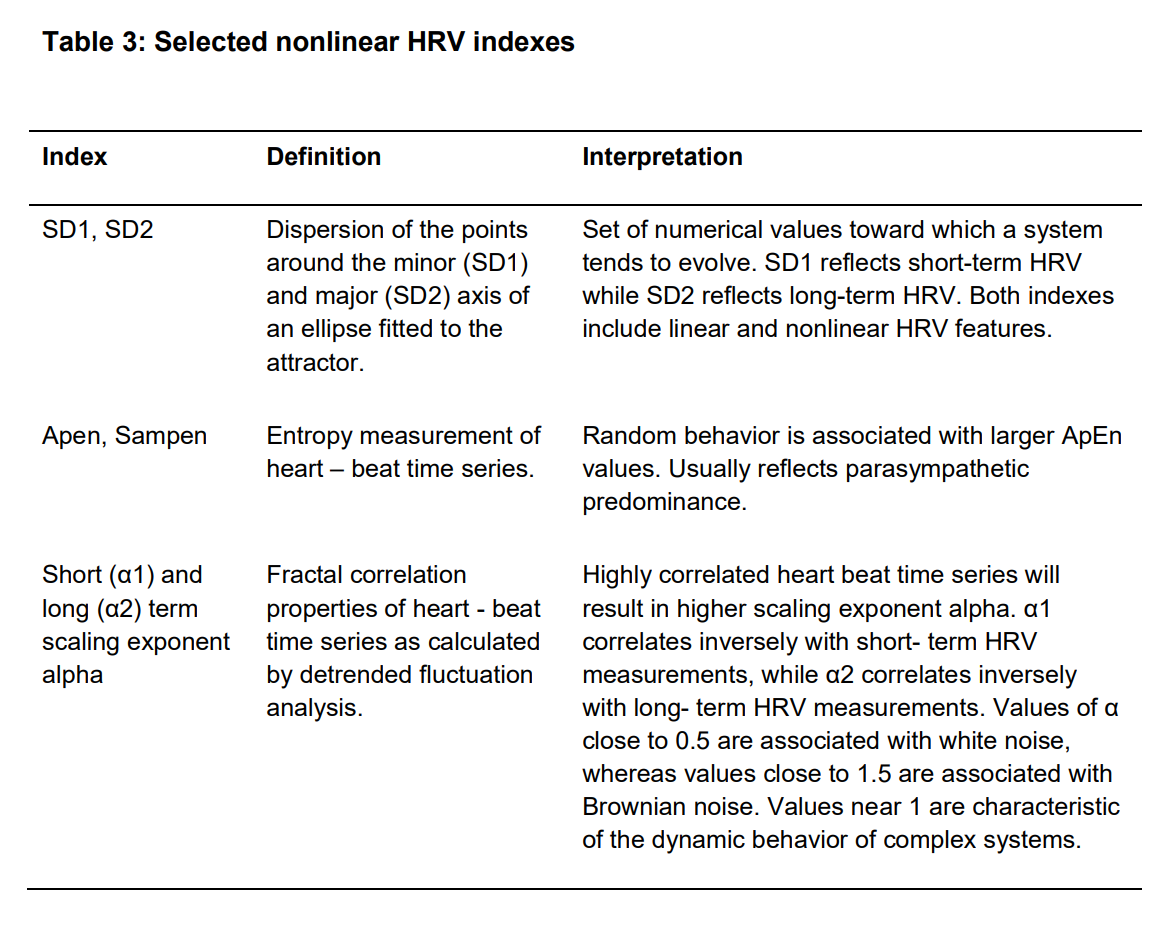
References
[1] - Shaffer, F., McCraty, R., & Zerr, C. L. (2014). "A healthy heart is not a metronome: An integrative review of the heart’s anatomy and heart rate variability". Frontiers in Psychology, 5, 1040.
[2] - Maxime Voisin*, Yichen Shen*, Alireza Aliamiri, Anand Avati, Awni Hannun, and Andrew Ng. Ambulatory Atrial Fibrillation Monitoring Using Wearable Photoplethysmography with Deep Learning
[3] - Radha, M., Fonseca, P., Moreau, A. et al. Sleep stage classification from heart-rate variability using long short-term memory neural networks. Sci Rep 9, 14149 (2019).
[4] - Lu, Lei & Zhu, Tingting & Morelli, Davide & Creagh, Andrew & Liu, Zhangdaihong & Yang, Jenny & Liu, Fenglin & Zhang, Yuan-Ting & Clifton, David. (2023). Uncertainties in the Analysis of Heart Rate Variability: A Systematic Review. IEEE reviews in biomedical engineering. PP. 10.1109/RBME.2023.3271595.
[5] - Rajendra Acharya, U et al. “Heart rate variability: a review.” Medical & biological engineering & computing vol. 44,12 (2006): 1031-51. doi:10.1007/s11517-006-0119-0
